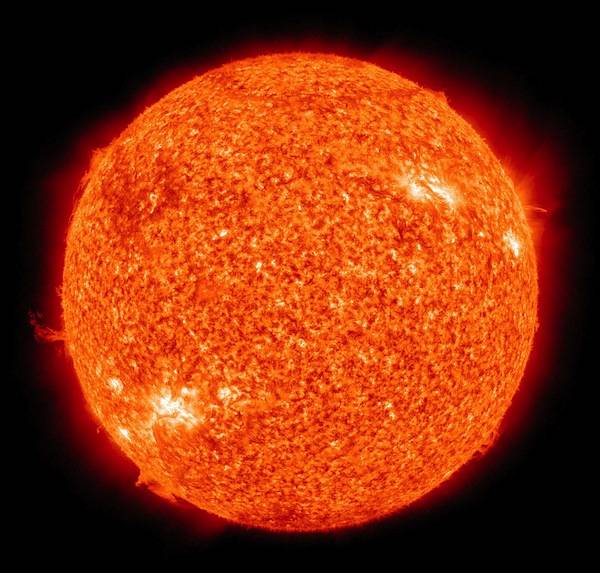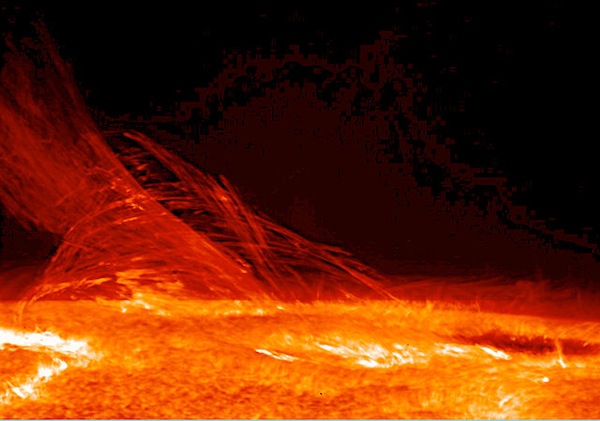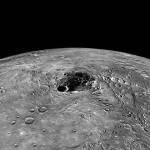Photo Courtesy of NASA
Sun
The Giant Star
The Sun is not a planet, it is a star. Most people forget that the Sun isn’t a planet but it’s really the brightest star in the Solar System. The Sun is almost a perfect sphere shape and has hot plasma – in fact it is made up of hot plasma with a unique magnetic field system also. Though, it is thought that the sun is going to be made up almost of helium, this is a small portion and the remainder is of hydrogen. It is said to be a lot of different and heavy elements found on the sun which includes iron, carbon, oxygen, neon and a lot of other elements.
Around 4.5 billion years ago, was when the earth was formed because of the collapse of a molecular cloud. It is referred to the big bang which helped formed the solar system. The mass of the sun started to become hotter and hotter as the days past in the beginning of the sun’s formation.
The sun is the brightest star in the solar system and it is around 85% brighter than all of the stars in the entire Milky Way galaxy. Most of the stars are considered to be red dwarf stars; the sun is a necessity when it comes to keeping the earth alive and the human population alive also.
The actual distance of the sun from the earth is about 149.6 million kilometres which is a tremendous distance but it is not that far away actually. The light coming from the sun can travel to the earth in around 8 minutes and 20 seconds; and the energy of the sunlight will help to support every single life form on earth. It will run the different weather, seasons and even the climate of the earth also.
The prehistoric era has to be the time in which the sun had most effect on the earth; and the sun is a star that has taken its time to form. It wasn’t always the size as it is now; it did take many years to form it size and become stronger and stronger and has continued to get brighter in the sky also.
Everyone can view the sun from earth though it is not going to be wise to stare directly at the sun because it can cause damage to the eyes. It will be wise not to directly stare at the sun but wear protective eye wear when it comes to looking at the sun. Though, the sun can be very harmful to the skin because too much from rays the sun gives off, can cause damage to the skin including some skin cancers.
Core
The Sun’s core makes up almost 25% of the solar radius and has a huge density of almost 150 g/cm. The temperatures of the sun is going to be certainly very hot at a possible 15.7 million K (Kelvin) and this is certainly a temperature no human could stand.
The core of the sun is going to be the only part of the sun that is going to offer thermal energy through fusion. Almost 99 percent of all power which is generated from the sun comes from the radius and the rest of the sun gets is energy from radiation coming from the core also. However, the energy that comes from the core will have to go through a variety of layers of the sun to get to the surface or the outside of the core. It will need to travel to the solar photosphere where it will go out into the space; it will go into space as sunlight or even as kinetic energy.
There are gamma rays coming from the sun which is released in fusion. They don’t get far though as they are trapped basically in the atmosphere of the sun and is kept close to the sun. Radiation can take a lot of time to actually reach the surface of the sun – almost ten thousand years and in some cases, longer. However, neutrinos can reach the surface within seconds which offers energy going to the surface and space.
Atmosphere
Some part of the Sun which is found above the photosphere can be known as the solar atmosphere. The solar atmosphere can actually be seen via a telescope but the telescope must go through the electromagnetic spectrum of the Sun.
The layers and layers on the suns interior is going to be around 2000 km thick and there are going to be several layers in all. Though the sun isn’t just orange or yellow; it is a mixture of colors because have a lot of bright gases circling and as a result there are many more bright colors that shine through.
The temperatures of the sun continue to get hotter and hotter as the layers go deeper. There are going to be times when the sun looks as though it has a whip throwing itself out from the sun and it can resemble a string of fire trying to escape. The sun continues to do this and has done this because it’s a way of some energy of escaping.
Earth's fate in the future?
There are some studies which have claimed that the Sun will continue to grow and when it does, it will almost disintegrate the Earth. However, if the earth does survive, it could mean that all of the water sources on earth will dry up and be lost in space. This will destroy the entire earth and the population because the intense heat from the sun will be all too much to bear for anyone.
This is because the temperatures are increasing and it is said even though it’s moving slowly in many billions of years, there could be big problems rising because of this.
Another theory says that many believe that in billions of years, the sun will eventually cool down and will expand.
The Source of Energy
The sun is going to provide the earth will its main source of energy. Many people don’t think about this but it’s true because this is where most energy sources come from and it has become something that is required to help keep the earth revolving and working correctly. Though, there are other sources of energy from outer space but this is only going to be due to the death of another star and the remnants of that star.
How this works, is that the materials of the star will be trapped into the earth and the earth’s crust which will offer a rise of geothermal energy. This will offer more volcano forms on earth and this will help to add fuel for nuclear reactors. Strangely though, there is less power heading to the surface of the earth.
Though, when it comes to solar energy, this is possible to harness in a variety of options. However, this is going to help natural and synthetic things such as plants because plants will take in the sunlight and help it to grow. The sunlight can convert the energy such as oxygen and even some carbon compounds which will offer direct heat or even electrical conversion. This is done via solar cells which are used by the solar power equipment; this will help to generate electricity.
This is how most of the planet runs because it is a vital source of energy and very much needed. The sun is close to the Milky Way Galaxy, particularly at the Orion Arm.






